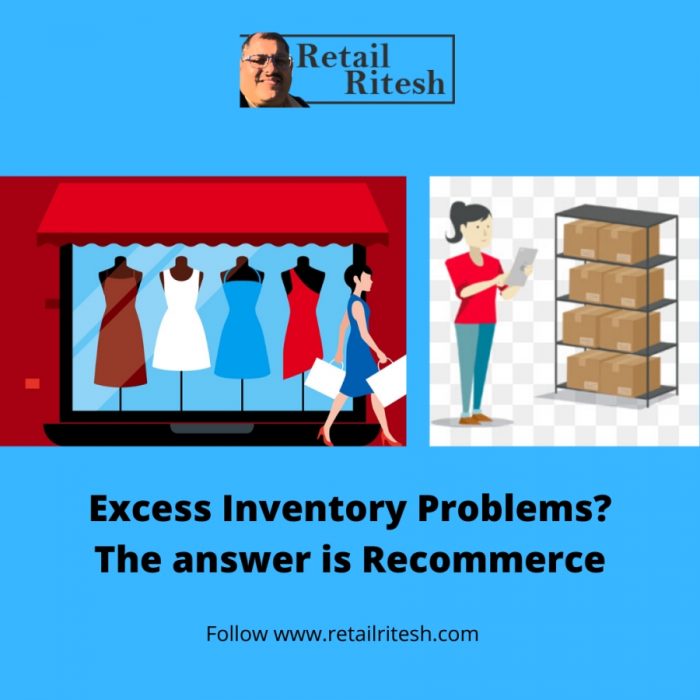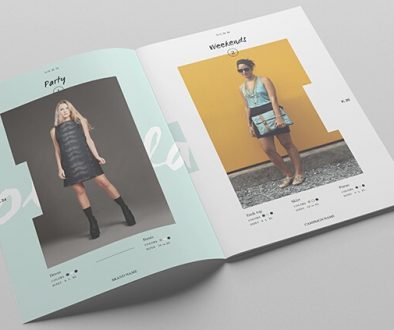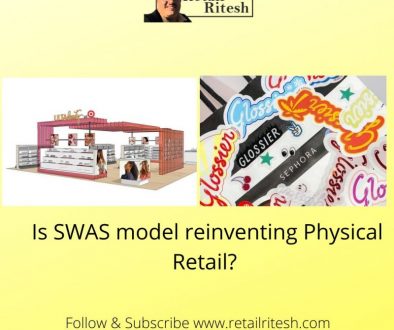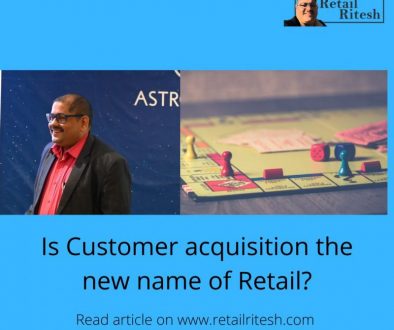Excess Inventory Problems? The answer is Recommerce
Inventory Issues- Recommerce is the way forward.
Recommerce — “resale commerce” — is the process of selling used products or excess inventory to companies or consumers.
A couple of weeks back, I was not aware of this term nor its business model until one of my LinkedIn connection Patricia vekich Waldron wrote a post on Recommerce that caught my attention and made me curious to learn more about the concept and understand how brands are utilizing this model of Recommerce to their advantages.
I strongly believe in acquiring new knowledge, learning and sharing with my friends through my blog articles. So this article would help retailpreneurs with the new business model.
What is Recommerce?
As per Wikipedia, Recommerce or reverse commerce, refers to the process of selling previously owned, new or used products, mainly electronic devices or media such as books, through physical or online distribution channels to companies or consumers willing to repair, if necessary, and reuse, recycle or resell them afterward.
Important statistics
Resale or Recommerce is already worth $24B and it’s expected to grow to $51B in just five years.
33% of Millennials and Gen Z expect to shop resale in 2019—and that figure is increasing 40% year over year.
Recommerce model – Not new for Indian Kitchens or culinary practices.
Recommerce model is being practiced for centuries in Indian kitchens… How?
Do you recall your mom or wife using leftover curries or vegetable dishes from previous night dinner and turning them into delicious parathas, new mixed vegetable stuffed idlis or even dosa’s stuffing.
Or even using them in a dish called Khichdi (vegetables mixed with lentils and rice).
Recommerce or recycling model has been used for centuries and it’s now it has been taken to the next level by digital & tech-savvy companies. We have been buying refurbished cars, mobiles, laptops TVs, etc for years now.
The same model is now taken to the apparel industry wherein sustainability is a big issue.
Learn more about sustainability in fashion, click here.
Basic steps for Recommerce model:
The process includes–
- Collect the obsolete and undesired products from the users and companies, and returned goods from e-commerce portals. (Products may or may not contain any defects)
- Sort them
- Repair them
- Repack them
- Make sure that these products work properly
- Sell them on Reverse Marketplaces or to the companies directly.
Driving consumption through re-use
For instance, instead of buying a new mobile every few years and just tossing the old one in a drawer, people are increasingly buying and selling these second-hand phones.
Counterpoint Research reports, “the global market for refurbished smartphones grew 13% y/y in 2017, reaching close to 140 million units. This was in contrast with the global new smartphone market that grew a scant 3% last year…
Apple has also started selling its refurbished used cellphones at lower prices to expand its user base in developing or underdeveloped economies.
Watch the video here

Recommerce in Fashion- Giving luxury products a new lease of life
Returning unwanted items and receiving points or discount vouchers for your next purchase is nothing new.
H&M has already organized such an initiative with its Garment Collection Program. After the success of the campaign in 2013, the brand introduced the possibility of returning clothes permanently. In return, H&M offered a discount card for 15% off the next in-store purchase.
Farfetch created a platform that allows you to donate old designer bags. In exchange, the company offers credit to fund the next purchase on their website.
Nordstrom has announced its latest creative projects initiative, See You Tomorrow, a new recommerce experience launched on January 31, 2020.
Powered by technology and logistics startup company Yerdle, “See You Tomorrow” offers customers both an online resale site and an in-store shopping experience in the New York flagship store.
The resale shop will feature a thoughtfully edited, authenticated assortment of pre-loved apparel and accessories from highly coveted brands.
Watch video here

Merchandise will include women’s apparel, women’s shoes, handbags, men’s apparel, accessories, shoes, children’s clothing and a limited selection of jewelry and watches.
Learn about Rent a Runway business model, click here.
Shopping second-hand is certainly not a new concept.
Consumers are also increasingly keen to reduce their own consumption and to help combat the negative impact on the environment.
This has led many retailers to enter the ‘Recommerce’ market (sometimes referred to as ‘resale’ or ‘reverse commerce’), which refers to the buying and selling of pre-owned goods.
There have been examples from the Middle Eastern retailer who are emphasizing sustainability in their campaigns and new collections hence Recommerce is here to stay for long.
Watch the video here

Case study: Yerdle
Yerdle, founded in 2012, is a white-label business that operates resale for brands.
It handles the logistics, including pricing, for resale platforms that live on brands’ e-commerce sites. (Someone shopping for a secondhand sweater from her favorite brand will have the experience of buying directly from that brand, rather than Yerdle.)
Yerdle business model is based on philosophy,
“Brands adds more authenticity to resale and are trusted by consumers [while resale] gives the luxury brands another revenue stream.”
Experts in reverse logistics.
Inventory management can pose particular problems since brands often aren’t redirecting new pieces from warehouses.
Yerdle operates on a revenue-share model with rates dependent on how much of the backend process it handles.
The data advantage
Unlike many online consignors, Yerdle isn’t a retailer.
This works to its advantage when securing partnerships as brands don’t have to worry that cooperating with or encouraging resellers can cut into their sales.
Data and consumer’s details remain with the brands, so Yerdle is only facilitating and helping brands to get rid of your excess or returned inventories to new price-conscious customers.
In case, if any of the middle eastern retailers want to learn more about Recommerce, then you can reach out to me on riteshmohan@yahoo.com
About the author:
Ritesh Mohan is a passionate retail professional with over 20 years in the Retail sector, handling some of the biggest brands in beauty, fashion and fragrances retail & FMCG sector. He has been instrumental in the growth of some of the regional brands as well in the Middle East region. Ritesh specializes in Retail management, Product development, and Brand Management, Retail Operations, Sales Management and Franchising Management. He strongly believes in empowering business owners with his wisdom & experience of around two decades in the industry. Hence he is going impart his knowledge in the form of a book. His book is currently underprint.





February 18, 2020 @ 7:28 am
LOVE this
February 19, 2020 @ 1:29 pm
thanks Christopher. I am glad you liked the article.
October 13, 2021 @ 11:04 am
Thank you for sharing the article retail industry always have worked in partnerships whether for Branding, promotion of sale of goods in the consumer market. The best example would be FMCG sector.
October 16, 2021 @ 6:55 pm
thanks vineet I am glad you liked the article